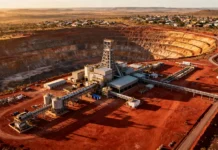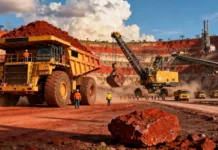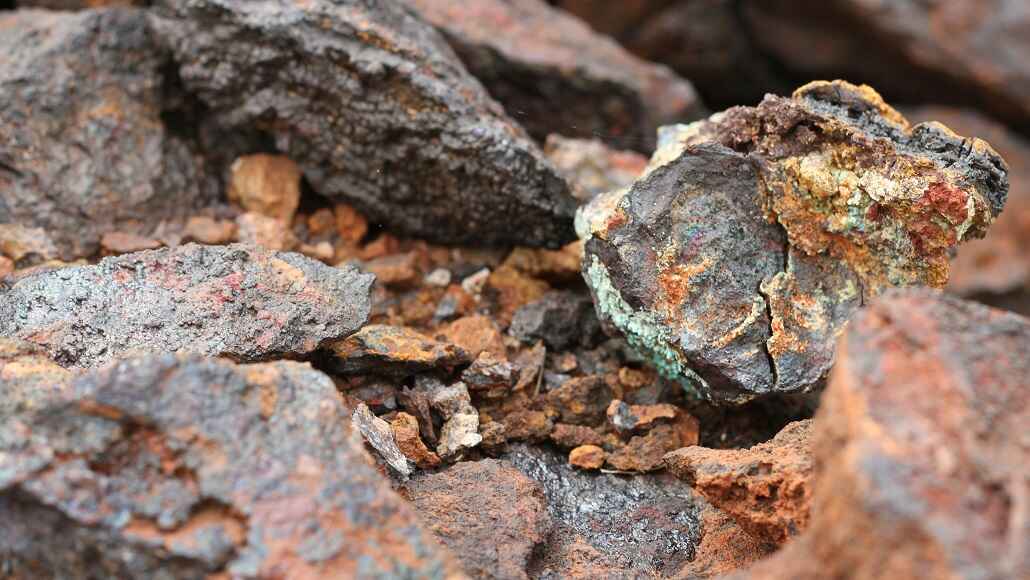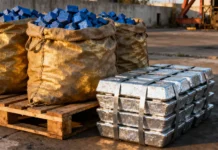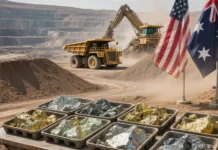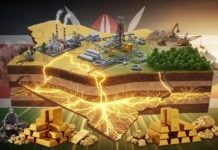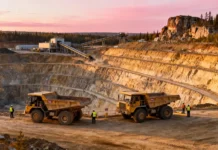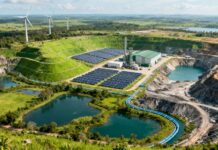In April 2025, China went on to impose a new round of export controls on seven rare earth elements (REEs), which happen to be essential when it comes to modern technology. These rare Earth elements are dysprosium, gadolinium, lutetium, samarium, scandium, terbium, and yttrium.
These latest barriers, which happen to come in response to US president Donald Trump’s tariffs of almost 145% on Chinese goods, are not at all outright bans. But they mean companies will have to apply for a license in order to export rare earths, which could lead to a temporary pause when it comes to their trade.
Given that China happens to be responsible for almost 90% of rare earth processing, the latest limitations on rare earth element exports have gone on to lead to disruptive effects, which are, by the way, anticipated. There are numerous sectors that are expected to face these massive challenges, such as energy, healthcare, automotive, and also aerospace, as per GlobalData.
It is well to be noted that the US remains highly exposed when it comes to any event of prolonged trade escalation, but the controls will also go on to have an international reach.
As per an analyst from GlobalData, Isabel Al Dhahir, given the spawning nature when it comes to supply chains, these kinds of restrictions will indeed have a global impact, thereby affecting trade partners along with customers across the world, not just in the US.
The US is looking out for more domestic suppliers when it comes to rare earth elements.
In 2024, the US went on to import almost $170 million worth of rare earth compounds as well as metals, mostly from China, by producing 45,000 tons of rare earth oxides amounting to $260 million domestically, as per the data from the US Geological Survey.
It is well to be noted that in recent years, the US has also taken several measures in order to secure a domestic supply when it comes to rare earth elements, which includes federal funding, efforts to reopen or expand domestic mines, as well as public private partnerships.
Apparently, this effort stems back to 2022, when the then-President Joe Biden invoked the Defense Production Act in order to speed up the development of the US energy transition industries and at the same time also invoked the Inflation Reduction Act, as per Martina Raveni, who is GlobalData’s strategic intelligence analyst.
Since taking office, Donald Trump, the US president, has gone on to issue several executive orders that are aimed at boosting domestic mining as well as production of the minerals.
In one of the recent written testimonies, Christopher Wright, the US energy secretary, went on to state that it is indeed necessary for the US to focus on building domestic capacities in order to extract, manufacture, process, and also recover end-of-life critical materials for their industrial needs, as well as energy goals and, of course, national security.
It’s worth noting the US Department of Energy (DOE) is already directly supporting these objectives that are laid out in the executive orders by way of identifying as well as speeding up the pending projects so as to support domestic mineral production, exploring the effectiveness when it comes to offtake agreements and also pricing support, and developing new programs in order to thrust domestic mining as well as production.
The DOE also happens to be coordinating with other agencies such as the US Department of Defense (DOD), which now aims to have a mine-to-magnet supply chain in order to support all US defense sector requirements by 2027. Moreover, the US Department of Commerce has already been directed to investigate if imports of critical minerals, exploring rare earth elements, as well as critical minerals along with their derivative products are, in a way, threatening US national security.
In spite of the leaps of progress, which are indeed witnessed in the past few years, the US At present is playing catch-up when it comes to rare earth supply, remarks Nicole Richards, who is Allonnia’s CEO. Allonia happens to be a biotech company that is looking to exploring rare earth elements from waste streams. Richards believes that extracting rare elements from waste as well as ore should also be considered when it comes to building strategies so as to diversify sources that are outside of China.
Rare earth mining, recycling, and processing in the US
It is worth noting that MP Materials is at present the only major rare earth producer in the US, which happens to be operating the Mountain Pass mine in California. The company happens to be investing in expansion, and in April 2025 was apparently awarded $58.5 million in order to support construction when it comes to a rare earth magnet manufacturing facility, which is situated at Fort Worth in Texas.
On the other hand, US DOD funding happens to be supporting Lynas USA, which is indeed focused when it comes to developing a domestic rare supply chain. One of the US subsidiaries of Australian-listed Lynas looks forward to building a US separation facility when it comes to light rare earth elements with another $258 million that is allocated for a heavy rare earth processing facility situated in Texas.
But the landscape when it comes to new projects is kind of sparse, as per GlobalData, with only three projects that are in active development and, in fact, facing considerable challenges.
These projects are NioCorp’s Elk Creek project, which is based in Southeast Nebraska; Alaska’s Bokan Mountain Project; and the Bear Lodge project by Rare Earth Resources, situated in northeastern Wyoming.
The earliest projections go on to indicate that these projects are not going to come online until the later part of this decade. With this kind of timeline, there are indeed raising concerns as the nations would indeed risk falling behind in the evolving market, which is growing rapidly.
The significance when it comes to recycling rare earths
Recycling happens to be seen as a very important step in order to mitigate the shortages in terms of exploring rare earth elements and is anticipated to become one of the most significant elements of new term supply chain diversification. That too in spite of recycling rates of only 5% today.
Raveni says that employing recycled materials happens to decrease dependence when it comes to issues such as mining output, geographic along with political monopolies, ore grade, and regional export quotas, in addition to certain other unpredictable factors that happen to make the market more volatile.
It is well to be noted that recycling also helps in decreasing the environmental effects of mining, and it is, by the way, very significant when it comes to considering emissions disclosure rules.
Moreover, as the new mines can go on to take 10 years in order to become operational, investment, when it comes to recycling facilities, is anticipated to play a prominent role in terms of near-term supply shortages until the time new mines come online.
Investments in terms of new technologies
Richards goes on to point out a wave of innovation as well as investment when it comes to critical mineral recovery as well as recycling and should be included as a part of US national defense initiatives.
In January 2025, the DOD awarded almost $5 million to REEcycle in order to enhance the recovery of the materials coming from electronic waste. Investments, when it comes to REE recycling facilities, are indeed growing across the US with other leading companies, such as Cyclic Materials and also MP Materials from Canada, as per GlobalData.
Apparently, e-waste is an immediate way to blunt the spear point when it comes to economic as well as national security concerns.
Development when it comes to new technology, which can both enhance rare earth recovery as well as minimise the environmental effect, is seen as a major driver in terms of processing as well as recycling mined ore or tailings.
It is well to be noted that Microsoft, the tech giant, has recently completed a US pilot project and has gone on to recover around 90% of the REEs, gold, and copper from almost 220t of shredded end-of-life hard disc drives, mounting caddies, as well as other materials.
This initiative, which is run in collaboration with Western Digital, PedalPoint Recycling, and Critical Materials Recycling, went on to use acid-free dissolution recycling (ADR) technology.
Apparently, the ADR was invented and along with it initially developed at the Critical Materials Innovation Hub, which was led by US DOE, by moving from lab into demonstration scale in a period of eight years.
It is worth noting that biotechnology solutions happen to be among those that can help raise the yield and at the same time decrease the carbon footprint as well as the environmental effect of REE processing.
Allonia happens to claim its technology can raise metal production by 20% and has a potential of 10% reduction when it comes to carbon footprint, while Alta’s platform is much cleaner, having less water consumption, air pollution, and climate impact. Richards also happens to suggest that the bio-based solutions can be put in place in a much faster way than the conventional routes.
Looking beyond the US when it comes to REE supply
Due to the barriers building the domestic capability, the US is also looking to externally bolster its rare earth supply chains. Australia, along with Canada, is certainly a good choice when it comes to sourcing REEs, but these countries happen to have limited production capacities and infrastructure, says Raveni.
She goes on to add that high costs along with the environmental concerns that are associated with rare earth element extraction in addition to its processing further make the objective of securing stable supplies outside of China very complex.
It is well to be noted that Lynas rare earth happens to be seen as a major player outside of China. It operates the Mount Weld mine in Western Australia and is also investing in downstream processing capabilities.
On the other hand, Vietnam should also not be ignored when it comes to rising players in rare earths, says Richards.
Apparently, Vietnam ranked 2nd to China with an estimated 22 million tons of rare earth reserves, or, for that matter, 20% of the overall global total as of 2024.
Vietnam’s separation as well as processing capacity is going to follow as the foreign investors show their interest in this supply.
The way to overcome the dominance of China
Regardless of where they come from—the US mines, imports from friendly nations, or probably recycling—there has to be a substantial investment and time, which is needed in order to diversify the US rare earth supply.
China’s dominance when it comes to the global rare earth market is mostly due to its lower production costs, which are often achieved by way of disregarding environmental regulations. China has also gone on to master the intricate process when it comes to separating and refining the rare earth, giving the country very important pricing power and supply control.
According to Richard, when it comes to rare earth elements, there are many processing steps that need significant capital as well as expertise in order to take a resource from scratch to a finished product.
It is indeed going to require a sustained level of public as well as private partnerships in order to achieve success when one is thinking of shifting from China to domestic resources.



